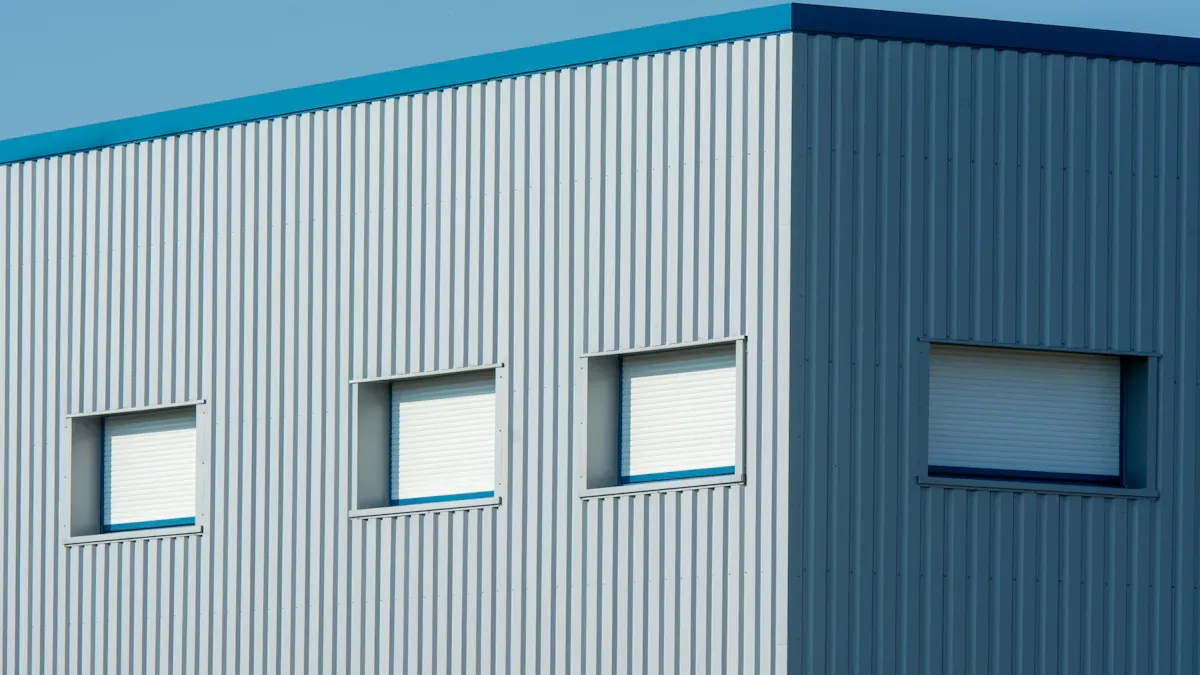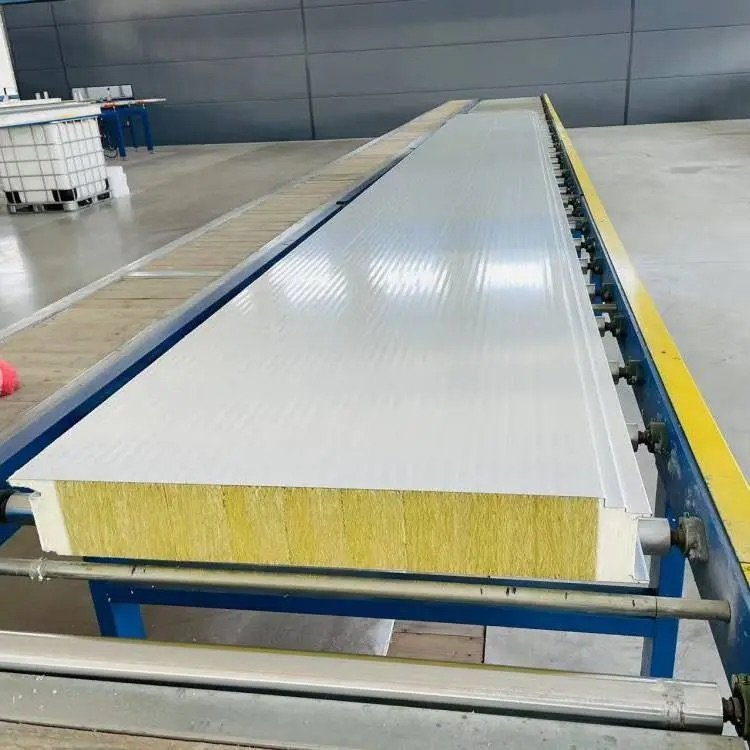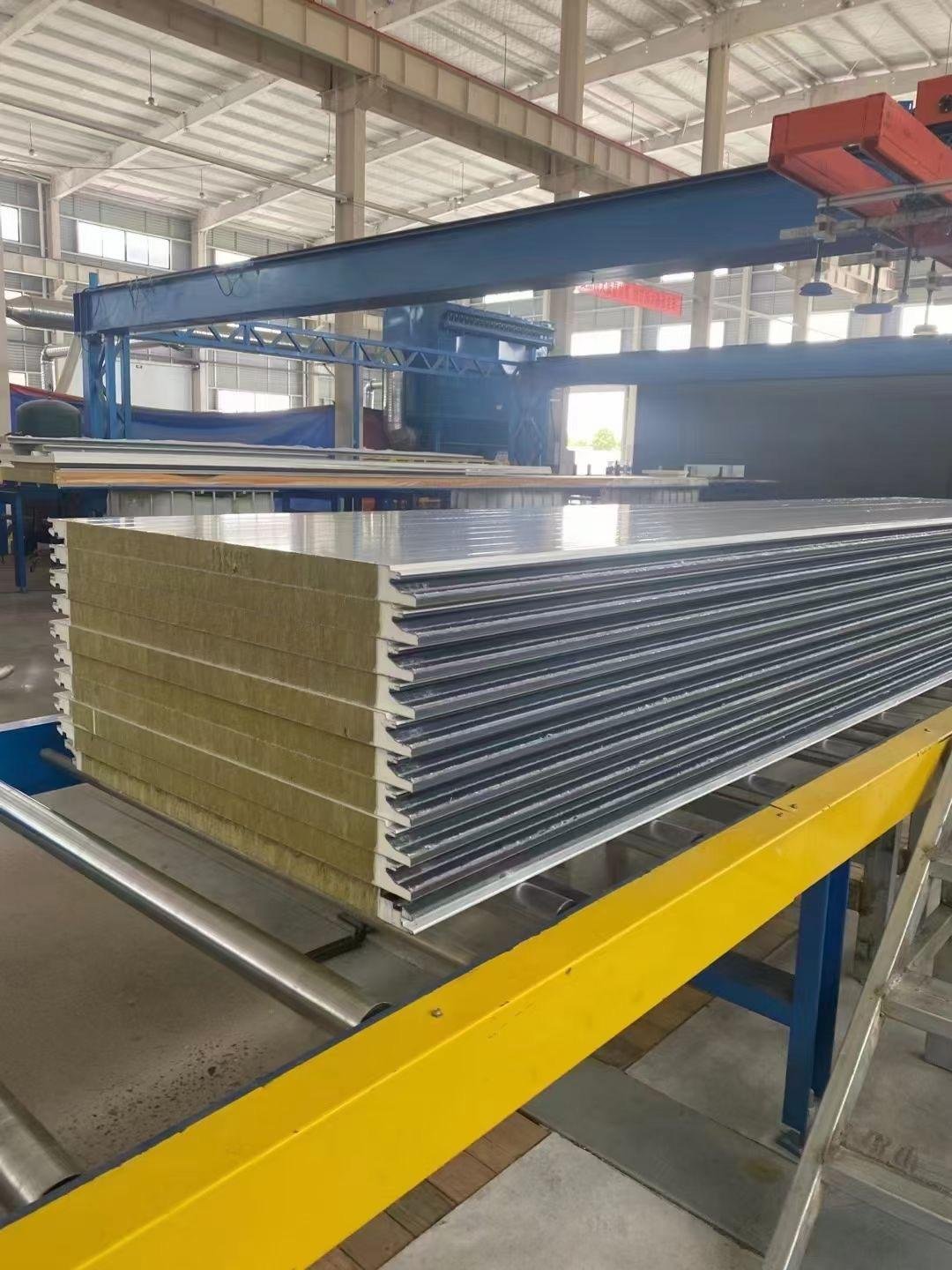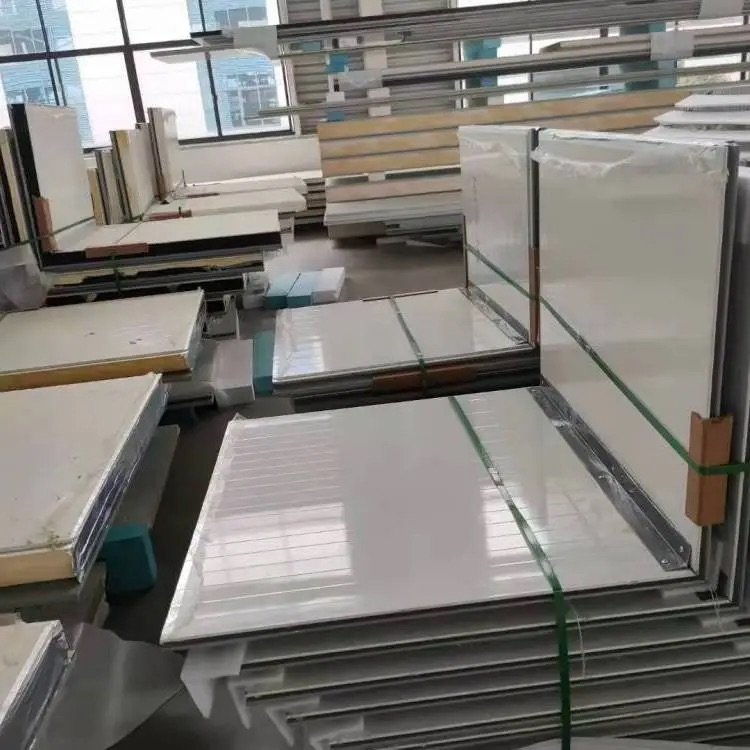
EPS sandwich panels are new building materials for better housing. They have a foam core (EPS) between two strong layers. These panels keep heat in and are very sturdy. They are light, so moving and setting them up is simple. This can cut building time by 40% compared to old ways. EPS panels also keep homes warmer with U-values as low as 0.18 W/m²K. This is much better than concrete. As the world focuses on saving energy, these panels are a smart choice for prefab homes.
Key Takeaways
EPS sandwich panels are light and simple to put together. They can cut building time by up to 40%, saving money and work.
These panels keep heat in or out well. This lowers energy costs and makes homes comfy all year.
EPS panels are cheaper to buy than materials like polyurethane. They are a good choice for builders on a budget.
EPS panels are strong and can handle bad weather. They protect homes for a long time.
Recycling EPS panels helps the environment. It cuts down on trash and saves energy during building.
What Are EPS Sandwich Panels?

Composition and Structure
EPS sandwich panels are modern materials used for building. They are strong, keep heat in, and can be used in many ways. These panels have a foam core called EPS, which is light but tough. This foam is placed between two steel layers. The steel can be Galvalume or PPGI, making it strong and weather-resistant. The foam core keeps heat inside well, with an R-value of about 4 per inch. This helps keep rooms warm and lowers energy bills.
These panels are not just good for insulation. They are also very strong but not heavy. For example, using EPS instead of polyiso in 600 panels can save 2.9 million pounds in weight. Their lightness makes them easy to move and set up. This saves time, fuel, and effort. The design also makes shipping easier and reduces the need for big machines like cranes.
Key Features and Customization Options
EPS sandwich panels have many features and can be customized. The steel layers can be 0.3mm to 0.8mm thick. You can pick how strong and stylish you want them to be. The foam core can also be changed. Its thickness can be 30mm to 200mm, and its density can be 7-20 kg/m³. This means you can make the panels fit your needs for heat, sound, or fire safety.
The outside look of the panels can also be chosen. You can pick designs like lined, soft line, micro profiled, grooved, or flat. The width is standard for walls and roofs, but the length can be adjusted. These options make EPS panels useful for many projects, like homes or factories.
Compared to other materials like polyurethane panels, EPS panels are cheaper and easier to use. They are strong, keep heat in, and cost less, making them a smart choice for today’s buildings.
Benefits of EPS Sandwich Panels for Prefabricated Housing
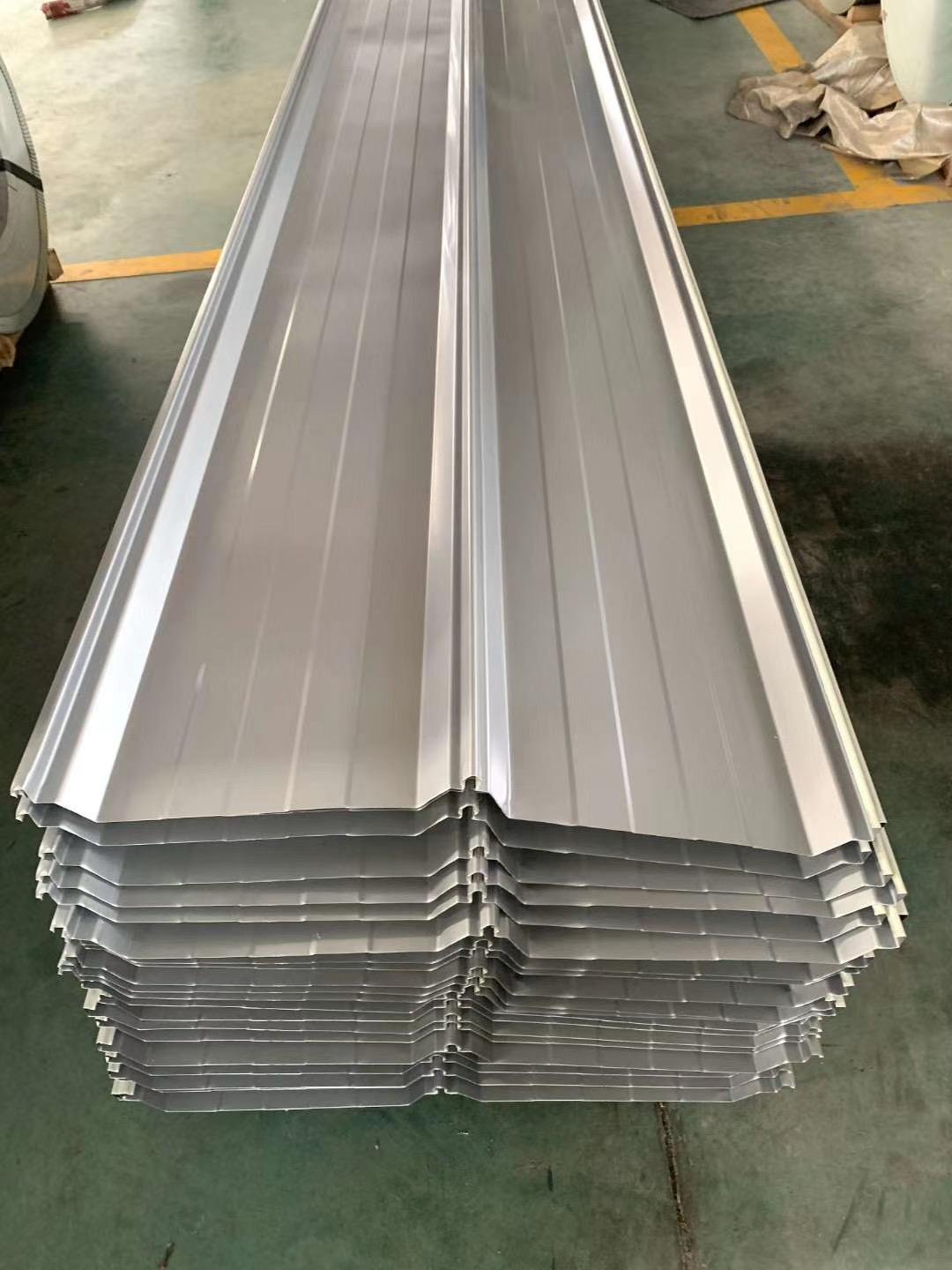
Thermal Insulation and Energy Savings
EPS sandwich panels keep homes warm in winter and cool in summer. The foam core blocks heat from moving in or out. This helps save energy and lowers heating and cooling bills. With an R-value of 4 per inch, they work well to keep rooms cozy. Using these panels means you save money and help the environment. They make homes more comfortable and energy-efficient.
Lightweight and Easy Installation
These panels are light and simple to move around. The foam core is not heavy but still strong. It helps carry weight and keeps heat inside. Because they are light, setting them up is quick and easy. You don’t need big machines to install them. This saves time and money on building. Whether for walls, roofs, or floors, these panels make construction faster and easier.
Cost-Effectiveness and Affordability
EPS panels are cheaper than other materials like polyurethane foam. They cost less but still work well for building. Below is a table showing their cost benefits:
Material | Lifespan (years) | Total Ownership Cost Increase (%) | |
|---|---|---|---|
EPS Sandwich Panels | $5–$8 | 15–20 | 18% (over 30 years) |
Rigid Polyurethane Foam (PUR) | $10–$15 | 25–30 | N/A |
Mineral Wool | $8–$12 | N/A | N/A |
Choosing EPS panels saves money upfront and on repairs later. They are a smart choice for affordable and long-lasting prefab homes.
Durability and Longevity
EPS sandwich panels are made to last a long time. They are strong and stay in good shape for years. The foam core sticks firmly to the outer layers, like OSB sheathing. This makes them as strong as traditional building materials. They are a great choice for homes that need to last.
These panels can handle tough weather conditions. They stand up to strong winds, heavy snow, and changing temperatures. This strength keeps your home safe and reduces damage risks. Your house stays secure for many years.
Research shows these panels keep working well over time. They don’t lose much insulation power or strength, even after decades. Some buildings with these panels last over 60 years, and some even more than 90 years. This makes them a smart choice because you save on repairs and replacements.
Here’s a simple look at how durable EPS sandwich panels are:
Evidence Type | Description |
|---|---|
Structural Integrity | Foam core and OSB layers make them very strong. |
Environmental Resistance | They handle bad weather and lower damage risks. |
Longevity Studies | They stay effective for many decades. |
Lifespan | Often last over 60 years, sometimes over 90 years. |
Choosing EPS sandwich panels means your home will last and stay strong. They are a smart, cost-saving option for modern housing. Their long life and toughness make them a great choice.
Comparison with Other Materials

EPS Panels vs. Concrete
EPS panels are much lighter than concrete. This makes them easier to move and set up. They don’t need heavy machines, saving money and time. These panels also keep heat in better than concrete. This means homes stay warmer and use less energy. Concrete cannot match this level of insulation.
EPS panels also speed up building projects. They are made in factories and installed quickly. Concrete takes longer because it needs time to harden. For faster construction, EPS panels are a smarter choice.
EPS Panels vs. Wood
EPS panels are stronger and last longer than wood. Wood can warp, rot, or get damaged by termites. EPS panels resist these problems with their tough core and outer layers. They also keep homes warmer and lower energy bills.
Wood needs regular care to stay in good shape. EPS panels need little maintenance and handle bad weather well. They are also strong against impacts and don’t rust. This makes them a better choice for long-lasting buildings.
Advantages of Prefab Sandwich Panels
Prefab sandwich panels have many benefits over older materials:
They are easier to move and set up than concrete or wood.
They are fully recyclable and use less water during building.
They stop fires from spreading and stand up to earthquakes.
They install quickly, saving on labor and building costs.
These panels work well for many uses, like homes or shelters. They are eco-friendly, affordable, and perfect for modern building methods.
Applications in Prefabricated Housing

Walls in Sandwich Panel Steel Prefab Houses
EPS panels are great for prefab house walls. They keep homes warm in winter and cool in summer. These panels are light, so they are easy to carry. This lowers labor costs and speeds up installation. You can choose the thickness and density to fit your needs. This helps with soundproofing or making walls stronger.
EPS panels last a long time and stay strong for years. They resist water, bugs, and bad weather. This makes them perfect for durable buildings. Their smooth surface lets you pick different finishes. You can design your home to look just how you want.
Roofs and Floors in Prefabricated Homes
EPS panels work well for prefab roofs and floors too. They are strong and safe for modern homes. Below is a table showing their main features:
Attribute | Description |
|---|---|
Strength | |
Energy Efficiency | They save energy by keeping homes warm or cool. |
Cost-Effectiveness | They are affordable and save money on building costs. |
For roofs, these panels stop heat from coming in or out. This keeps homes energy-efficient and comfortable. For floors, they are light but can hold heavy loads. This makes them a smart and budget-friendly choice for new homes.
Versatility in Modern Construction
EPS panels are very flexible for modern building projects. They fit many designs and ways of building. Studies show their many uses:
Panels come in different thicknesses for various needs.
They are strong and keep heat in, good for homes or offices.
They resist fire, meeting safety rules and protecting families.
Whether for small homes or big buildings, EPS panels are reliable. They are eco-friendly and save money, making them great for green construction.
Environmental Impact of EPS Sandwich Panels

Sustainability and Recyclability
EPS sandwich panels are great for eco-friendly building. The core material, expanded polystyrene (EPS), can be fully recycled. Old EPS can be turned into new items like insulation or packaging. This helps cut down on trash and saves natural resources. Recycling EPS also uses less energy than making new materials, which is better for the planet.
Recycling supports reusing materials in a circular economy. Studies show EPS has less environmental impact over its life than many older materials. By using prefab sandwich panels, you help reduce waste and support sustainability.
Energy Efficiency and Reduced Carbon Footprint
EPS sandwich panels save energy and lower carbon emissions. These panels, like Structural Insulated Panels (SIPs), are 40% to 60% more energy-efficient than older insulation. They stop air leaks, which can waste up to 40% of heating and cooling energy. This means less energy use and fewer carbon emissions.
Making prefab sandwich panels also produces less carbon than traditional materials. For example, prefab slabs release 2.21 kgCO2/m² less carbon than regular slabs. Using these panels saves money on energy and helps the environment.
Environmental Benefits of Prefab Sandwich Panels
Prefab sandwich panels have many eco-friendly benefits. Research shows they save energy and use materials wisely. For instance:
Study Title | Key Findings | Energy Savings |
|---|---|---|
Eco-Sandwich Wall Panel System | Tested thermal performance of recycled geopolymer panels | Up to 25% yearly energy savings in test buildings |
Study Title | Key Findings | Material Efficiency |
|---|---|---|
Development and Application of a Prefabricated Façade Panel | Used 50% recycled materials in concrete panels | Strong and durable results achieved |
These panels cut waste during building and need fewer materials. Their energy-saving features make them perfect for green construction. Choosing prefab sandwich panels helps protect the planet and build a sustainable future.
Challenges and Considerations
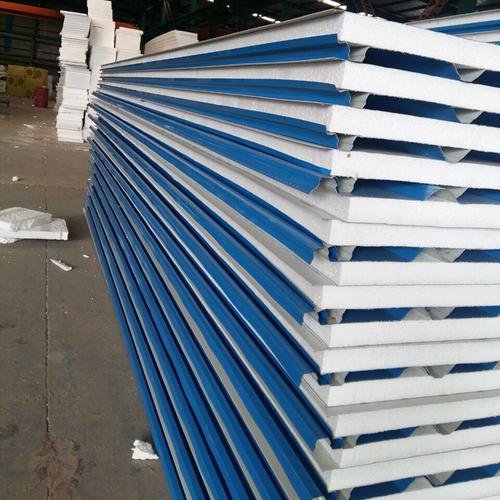
Fire Resistance and Safety Concerns
EPS sandwich panels need careful thought for fire safety. They insulate well but may not resist fire strongly. Panels with PIR foam burn fast, make big flames, and release smoke. Stone wool panels are safer in fires. They produce less smoke and fewer harmful gases.
🔥 Note: Tests show PIR foam panels fail in real fires. Stone wool panels resist fire better and are less toxic.
To improve fire safety, use panels with fire-resistant cores or coatings. Always follow local building rules and fire safety standards.
Addressing Limitations in EPS Panels
EPS panels can face problems like wear from tough weather and lower insulation over time. Heat changes can weaken edges and cause cracks. Water can also reduce how well they keep heat inside as they age.
Study | Findings | Problems Found |
|---|---|---|
Heat effects on wall insulation systems | Cracks and stress at panel edges | |
Daniotti et al. (2013) | Insulation weakens with water exposure | Lower heat resistance as panels get older |
Mahaboonpachai et al. (2008) | Bonding weakens with temperature changes | Edges lose strength over time |
To fix these issues, add coatings or sealants to block water damage. Regular checks and repairs can help panels last longer.
Ensuring Longevity in Different Climates
EPS panels work well in most climates, but extreme weather can affect them. Hot areas can weaken the foam core over time. Cold places may cause cracks from freezing and thawing.
Choose panels made for your climate to make them last longer. Thicker panels with dense cores are better for cold regions. UV coatings protect panels in sunny areas. Good installation and regular care keep homes safe and energy-efficient for years.
EPS sandwich panels are a smart choice for modern homes. They save energy, lower costs, and help the environment. These panels are light but strong, perfect for prefab houses. They last long and provide comfort while saving money. Prefab panels also reduce waste and use less energy during building.
If you want an affordable and eco-friendly option, try these panels. They mix new ideas with usefulness, making them great for future buildings.
FAQ
What are EPS sandwich panels made of?
EPS sandwich panels have a foam core called expanded polystyrene (EPS). This foam is placed between two strong outer layers, usually steel or aluminum. The design makes the panels light, strong, and great for keeping heat in.
Are EPS sandwich panels fire-resistant?
EPS panels can resist fire, but it depends on the materials used. Panels with fire-retardant cores or special coatings are safer. Always follow fire safety rules when using these panels.
🔥 Tip: Use stone wool panels for better fire protection.
How long do EPS sandwich panels last?
With good care, EPS panels can last more than 60 years. Their lifespan depends on weather, how they’re installed, and regular upkeep. Adding protective layers and checking them often can make them last even longer.
Can EPS panels be recycled?
Yes, you can recycle EPS panels. The foam core can be reused to make new insulation or packaging. Recycling helps reduce waste and supports eco-friendly building.
♻️ Note: Look for local recycling centers that accept EPS materials.
Are EPS panels suitable for all climates?
EPS panels work well in most weather conditions. In very hot or cold places, thicker panels or UV coatings might be needed. Proper setup and care help them stay effective in any climate.
🌦️ Tip: Pick panels made for your area’s weather for the best results.

